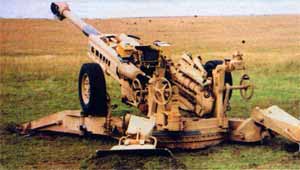With the selection of the F-35, here is an older story (July 2010) I did with esteemed colleague Wendell Minnick, Defense News Asia Bureau Chief, at the earlier stages of the F-X saga. Many independents genuinely saw the Eurofigher Typhoon as the most suitable option for Japan to not only fit the requirement, but to give Japan’s sagging defense industrial base a lot of work!
TAIPEI and TOKYO – A request for proposals for the Japanese Air Force’s $10 billion F-X tender is expected as early as October, and the Boeing F/A-18 Super Hornet and Eurofighter Typhoon are preparing to duke it out for the 40 to 50 fighters.
Budget allocations to replace 73 aging F-4EJ Kai Phantoms are planned for 2011, said Satoshi Tsuzukibashi, director of the Office of Defense Production at the Japan Business Federation, or Keidanren, Japan’s most powerful industrial lobby. The decision has been on hold since 2007 due to budgetary problems, political upheaval and procurement scandals.
Tokyo also delayed a decision hoping the U.S. would release the F-22 Raptor for export. But that option died last year, when the U.S. canceled further production.
There were also hopes that program delays would make available the F-35, though this appears unlikely, except for possible low-rate initial production aircraft, due to program setbacks in the U.S., sources said. Japan put itself in the back of the line when it failed to join the F-35 international investment partnership, a Japan-based U.S. defense industry official said. The F-35 is not expected to be available until 2020 or later for Japan.
But not everyone in Japan has given up on the F-35 for F-X.
“The F-35 is the most probable choice,” Tsuzukibashi said. “However, Keidanren doesn’t support any specific option. Our request is to maintain and strengthen Japan’s industrial technology and production base, and we don’t particularly favor one option.”
Sources indicate the F-35 is better suited for Japan’s F-XX program for 200 to 250 fighters, scheduled for around 2020. Many see F-X only as a stopgap to a fifth-generation jet.
Though the Eurofighter consortium is offering Japan attractive industrial participation, the Typhoon faces an uphill battle. The Japanese have never procured a non-U.S. fighter jet.
“Normally, the Japanese would not mess with the U.S. alliance, therefore the F-18 will have a political advantage,” a European defense industry source said. “But the Eurofighter might well serve as a stopgap to the F-XX program’s preferred platform, the F-35. If they want the better fighter, the Eurofighter is better than the F/A-18.
“But for some, they may be nervous of drawing into question the U.S. alliance by picking a non-U.S. fighter,” he said. “We do not want to be viewed as a threat to U.S. relations with Japan or perceived as doing anything to endanger them.”
One strategy is to offer the Eurofighter as a pragmatic “stepping stone in terms of capability, industrial participation and technology transfer to either the indigenous development of the F-XX or the F-35,” the European source said. Eurofighter is offering Japanese industry licensed production.
There also is European interest in helping Japan develop its own indigenous stealthy fighter for the F-XX competition.
In 2009, Japan’s Ministry of Defense (MoD) initiated a $500 million research program, through the Technical Research and Development Institute, for the Advanced Technology Demonstrator-X (ATD-X) Shinshin stealth fighter.
Boeing also is offering attractive industrial participation options.
“We are prepared to work with the Japanese heavies as well as other firms to identify opportunities for local assembly and licensed production, including a tailored indigenous logistics support package,” said Joe Song, Boeing’s vice president of Asia-Pacific business development.
Boeing has a long history of working closely with the Japanese defense industry, including deals with Kawasaki Heavy Industries and Mitsubishi Heavy Industries, Song said. These deals include co-assembly and co-production of CH-47 Chinook helicopters, AH-64 Apache Longbow helicopters and upgrades for F-15J/DJ fighters.
Song said recent sales to Australia provide evidence of a strong vote of confidence in the acquisition of Super Hornets. “Boeing delivered five Super Hornets in March – and six this week – on time and on budget.
“In addition, our affordability is the most important factor that can ensure robust licensed production for the Japanese industrial base under the current Japan Ministry of Defense F-X budget,” Song said. “Our known cost, delivery schedule and proven track record of industrial participation in Japan is how Boeing brings the best value to Japan.”
The Super Hornet has a lot going for it, said one Tokyo-based U.S. industry analyst. Most important is commonality with the U.S. Navy and Marine Corps, which both fly it. Boeing also has a long history of cooperation with Japanese industry. However, there are shortcomings. The F/A-18 has only 11 hardpoints to accommodate weapons and a range of 2,300 kilometers compared with the Eurofighter’s 13 hardpoints and 2,900-kilometer range, the analyst said.
Not everyone agrees Japanese industrial participation is economically viable for just 40 to 50 fighters.
“It’s also hard to see the Japanese government spending a lot of money to set up a production line for a small number of fighters that, while competent and deadly, are certainly not on the cutting edge of stealth or control technology,” the analyst said.
“I simply don’t see where the Japanese industry would gain that much with either F/A-18 or Eurofighter limited co-production,” he said. “Full licensed production is probably not remotely realistic, but the question is, what do they get in terms of technology to build any part of either fighter? Both are long in the tooth compared to the latest and greatest fifth-generation fighters. So the Japanese industry will be hard-pressed to make the technology transfer case in this instance.”








